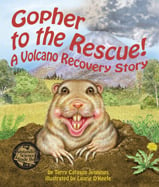Alignment to Standards for FL

| Grade | Number | Standard |
|---|---|---|
| 1 | SC.1.E.6.1 | Recognize that water, rocks, soil, and living organisms are found on Earths surface. |
| 1 | SC.1.E.6.3 | Recognize that some things in the world around us happen fast and some happen slowly. |
| 1 | SC.1.L.17.1 | Through observation, recognize that all plants and animals, including humans, need the basic necessities of air, water, food, and space. |
| 1 | SS.1.G.1.4 | Identify a variety of physical features using a map and globe. |
| 2 | SC.2.L.17.1 | Compare and contrast the basic needs that all living things, including humans, have for survival. |
| 2 | SC.2.L.17.2 | living things are found all over Earth, but each is only able to live in habitats that meet its basic needs. |
| 2 | SS.2.G.1.1 | Use different types of maps to identify map elements. |
| 3 | SS.3.G.2.4 | Describe the physical features of the United States, Canada, Mexico, and the Caribbean. |
| 4 | SC.4.E.6.4 | basic differences between physical weathering (breaking down of rock by wind, water, ice, temperature change, and plants) and erosion (movement of rock by gravity, wind, water, and ice). |
| 4 | SC.4.L.16.3 | Recognize that animal behaviors may be shaped by heredity and learning. |
| 4 | SC.4.L.17.2 | Explain that animals, including humans, cannot make their own food and that when animals eat plants or other animals, the energy stored in the food source is passed to them. |
| 5 | SC.5.L.14.2 | Compare and contrast the function of organs and other physical structures of plants and animals, including humans, for example: some animals have skeletons for support -- some with internal skeletons others with exoskeletons -- while some plants have stem |
| 5 | SC.5.L.15.1 | when the environment changes, differences between individuals allow some plants and animals to survive and reproduce while others die or move to new locations. |
| 5 | SC.5.L.17.1 | Compare and contrast adaptations displayed by animals and plants that enable them to survive in different environments such as life cycles variations, animal behaviors and physical characteristics. |
| K | SC.K.L.14.2 | Recognize that some books and other media portray animals and plants with characteristics and behaviors they do not have in real life. |
| K | SC.K.L.14.3 | Observe plants and animals, describe how they are alike and how they are different in the way they look and in the things they do. |
| K | SS.K.G.1.2 | Explain that maps and globes help to locate different places and that globes are a model of the Earth. |
| K | SS.K.G.1.3 | Identify cardinal directions (north, south, east, west).¾ |
| K | SS.K.G.1.4 | Differentiate land and water features on simple maps and globes. |
| K | SS.K.G.3.1 | Identify basic landforms. |